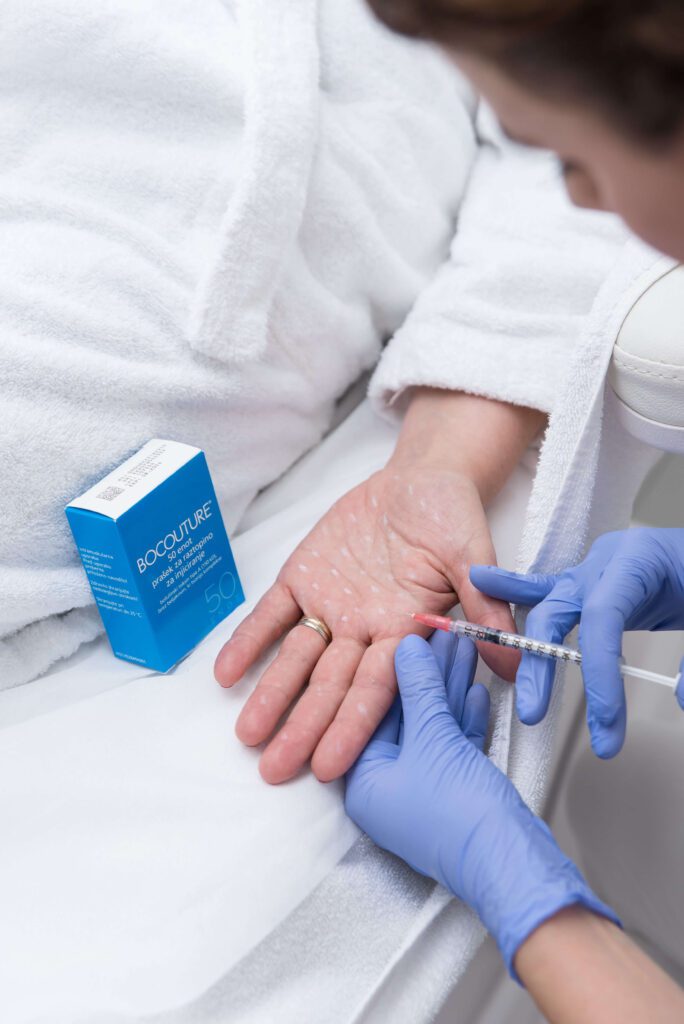Botox Sweat Therapy
Excessive sweating is a medical entity known as hyperhidrosis, and for certain individuals, it represents a significant aesthetic concern.
Excessive sweating is most commonly localized to the areas of the armpits, palms, and soles and is effectively controlled with Botox.

Treatment
Botulinum toxin type A reversibly reduces the release of substances from nerves into the sweat gland, thereby reducing sweat secretion. When applied to the skin in the region of the armpits, palms, or soles, Botox prevents sweating for between 5 and 6 months, depending on the dose. This eliminates the excess sweat being secreted, reducing unpleasant odors and discomfort associated with excessive sweating. The treatment is performed by creating a iodine and starch test on the area to be treated before the procedure, thereby assessing the density and distribution of the sweat glands. Anesthetic cream is then applied, or conduction anesthesia is administered. Application is done using fine insulin needles, and during application, an ice stick is placed to make the treatment as comfortable as possible. Usually, a total of 100 units are administered, and more can be added if necessary. After the procedure, Calming Bliss, a calming cream, and Repair gel for skin renewal by Juliette Armand are applied. The treatment lasts about an hour.
Candidates
Candidates are all those who suffer from excessive sweating and cannot solve their problem with antiperspirants, as well as individuals who don’t have underlying organic diseases causing hyperhidrosis. The treatment should not be performed if there’s an infection in the areas where Botox is to be applied. Also, it should not be performed on people who are sensitive or allergic to any ingredient of the preparation. In people with certain neuromuscular disorders (ALS, myasthenia gravis, Lambert-Eaton syndrome), there’s a possibility of worsening the treatment effect.
Results
The initial effect is seen after 3 to 7 days, while the full effect is visible in about 10 days. The effect lasts between 4 to 6 months, and patients typically come for treatment twice a year.
Recovery
After the procedure, it is recommended to remain in an upright or seated position for 4 hours. The treatment is very safe and hardly causes any side effects, leading to an improvement in the quality of life. It’s advised to avoid saunas and tanning beds for 10 days after treatment.